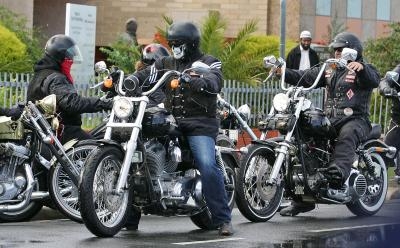
Harley gas tanks must never leak and when they leak they must never be repaired. Leaking tanks must be scrapped and replaced. New gas tanks leak because of defective welds. If pressure testing reveals a leak in a new tank the tank should be returned to the place of purchase for a refund. Used gas tanks leak because of camouflaged collision damage or internal corrosion. Used tanks should always be stripped of paint and bead blasted before pressure testing. Gas tanks must always be empty and dry before being worked on. Pressure testing requires a reliable source of clean, dry, compressed air.
Connect the air compressor to the air tank with an air hose and two air hose fittings. Regulate the pressure of the compressed air released from the air tank with an air pressure gauge. Use the regulated compressed air with a pressurized air line and detachable fittings.
Drop a one foot length of light chain into the gas tank through the filler opening. Shake the tank to loosen and remove any rust inside the tank. Remove the chain.
Turn the tank upside down and shake vigorously. Attach a blower fitting to a pressurized air line. Blast the inside of the tank with pressurized air.
Seal the petcock opening on the bottom of the gas tank with an air hose fitting attached to a pressurized air line. If necessary, install a fuel petcock and fit the air hose to the petcock with a hose fitting and a flat head screwdriver.
Prepare a solution of 50 percent dish washing detergent and 50 percent water. Adjust the air pressure leaving the compressed air tank to 15 pounds per square inch above atmosphere.
Seal the gas cap and pressurize the inside of the gas tank to 15 pounds per square inch above atmosphere. Paint the exterior of the gas tank with the detergent-water solution using a paint brush.
Look for air bubbles. Any air bubble indicates a leak and a defective gas tank.